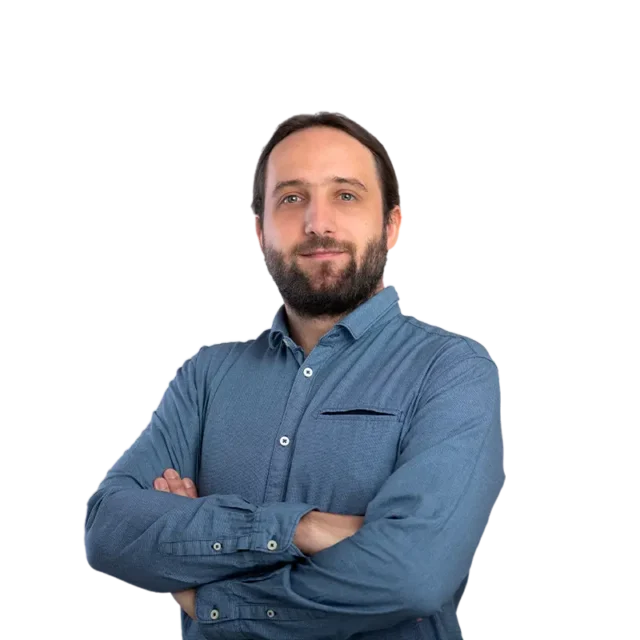 DE
DE- Industries
- Finance
Nearshore software development for finance—secure, scalable, and compliant solutions for banking, payments, and APIs.
- Retail
Retail software development services—e-commerce, POS, logistics, and AI-driven personalization from nearshore engineering teams.
- Manufacturing
Nearshore manufacturing software development—ERP systems, IoT platforms, and automation tools to optimize industrial operations.
- Finance
- What we do
- Services
- Software modernization services
- Cloud solutions
- AI – Artificial intelligence
- Idea validation & Product development services
- Digital solutions
- Integration for digital ecosystems
- A11y – Accessibility
- QA – Test development
- Technologies
- Front-end
- Back-end
- DevOps & CI/CD
- Cloud
- Mobile
- Collaboration models
- Collaboration models
Explore collaboration models customized to your specific needs: Complete nearshoring teams, Local heroes from partners with the nearshoring team, or Mixed tech teams with partners.
- Way of work
Through close collaboration with your business, we create customized solutions aligned with your specific requirements, resulting in sustainable outcomes.
- Collaboration models
- Services
- About Us
- Who we are
We are a full-service nearshoring provider for digital software products, uniquely positioned as a high-quality partner with native-speaking local experts, perfectly aligned with your business needs.
- Meet our team
ProductDock’s experienced team proficient in modern technologies and tools, boasts 15 years of successful projects, collaborating with prominent companies.
- Why nearshoring
Elevate your business efficiently with our premium full-service software development services that blend nearshore and local expertise to support you throughout your digital product journey.
- Who we are
- Our work
- Career
- Life at ProductDock
We’re all about fostering teamwork, creativity, and empowerment within our team of over 120 incredibly talented experts in modern technologies.
- Open positions
Do you enjoy working on exciting projects and feel rewarded when those efforts are successful? If so, we’d like you to join our team.
- Hiring guide
How we choose our crew members? We think of you as a member of our crew. We are happy to share our process with you!
- Rookie booth camp internship
Start your IT journey with Rookie boot camp, our paid internship program where students and graduates build skills, gain confidence, and get real-world experience.
- Life at ProductDock
- Newsroom
- News
Stay engaged with our most recent updates and releases, ensuring you are always up-to-date with the latest developments in the dynamic world of ProductDock.
- Events
Expand your expertise through networking with like-minded individuals and engaging in knowledge-sharing sessions at our upcoming events.
- News
- Blog
- Get in touch

04. Apr 2025 •2 minutes read
Unlocking the future of search: Insights from CTO Jovica Zorić
Jovica Zorić
Chief Technology Officer
At our recent Friday Talk, Jovica Zorić, our CTO, took us on an insightful journey Towards smarter search, exploring the evolution of search methodologies—from simple pattern matching to advanced AI-driven techniques.
Jovica shared his hands-on experiences and experiments in developing smarter search functionalities.
Exploring the foundations of search
His exploration began with the Model Context Protocol (MCP), a client-server architecture that enables large language models (LLMs) to interact with various systems. In this case, he focused on using MCP to facilitate seamless interaction with PostgreSQL. This initial exploration triggered a deeper dive into the challenges of creating effective e-commerce search solutions.
To illustrate his points, Jovica used a real-world dataset of UK products from Kaggle, providing a practical foundation for the demonstration. He started with traditional search techniques, beginning with simple wildcard searches using SQL’s “LIKE/ILIKE” operator. While straightforward, this method struggles with variations and typos.
To address these limitations, he introduced fuzzy search using PostgreSQL extensions like pg_trgm, which enhance search accuracy by allowing typo tolerance and approximate matching. However, while fuzzy search improves the handling of misspellings, it doesn’t fully capture the meaning behind a query. This is where full-text search in PostgreSQL comes into play.
Transitioning to AI-powered search
Jovica then explored PostgreSQL’s advanced full-text search capabilities, explaining how they enable more sophisticated term matching and ranking. Considering both the relevance and frequency of words, this approach significantly refines search accuracy.
He also demonstrated how combining fuzzy search with full-text search creates a robust and flexible solution for handling different queries. He also mentioned dedicated search solutions like Elasticsearch, Typesense, and Qdrant. While PostgreSQL provided a solid foundation, these tools offer specialized search capabilities and the best choice ultimately depends on specific requirements.
The talk then transitioned into AI-powered search, where Jovica introduced vector embeddings—a technique that transforms text into numerical representations of semantic meaning. He explained how cosine distance measures similarity between vectors, allowing searches to be based on meaning rather than just keywords.
To implement this, he leveraged the pg_vector extension in PostgreSQL, which enables efficient vector searches. He also showcased an embedding server written in Python, converting search queries into vectors. This allowed for natural language queries like “phone with the biggest battery” to return relevant results based on intent rather than exact wording.
Enhancing search with large language models
Finally, Jovica integrated LLMs to enhance the search process further. He demonstrated how LLMs refine search results by understanding context and intent in natural language queries. For example, when asked about the “best budget camera for wildlife photography,” the LLM could identify and highlight products with specific features, such as high frames per second (FPS) for capturing fast action. This showed how AI-driven search goes beyond traditional methods, delivering greater accuracy and relevance.
Throughout his presentation, Jovica emphasized the importance of choosing the right search technique for the specific use case. From simple pattern matching and dedicated solutions to AI-enhanced search, his demonstrations showcased the strengths and limitations of each approach, highlighting how they work together to create smarter search functionalities.
Explore our blog section for upcoming captivating topics that we’ll be sharing with you soon.
Tags:Skip tags

Jovica Zorić
Chief Technology OfficerJovica is a techie with more than ten years of experience. His job has evolved throughout the years, leading to his present position as the CTO at ProductDock. He will help you to choose the right technology for your business ideas and focus on the outcomes.


